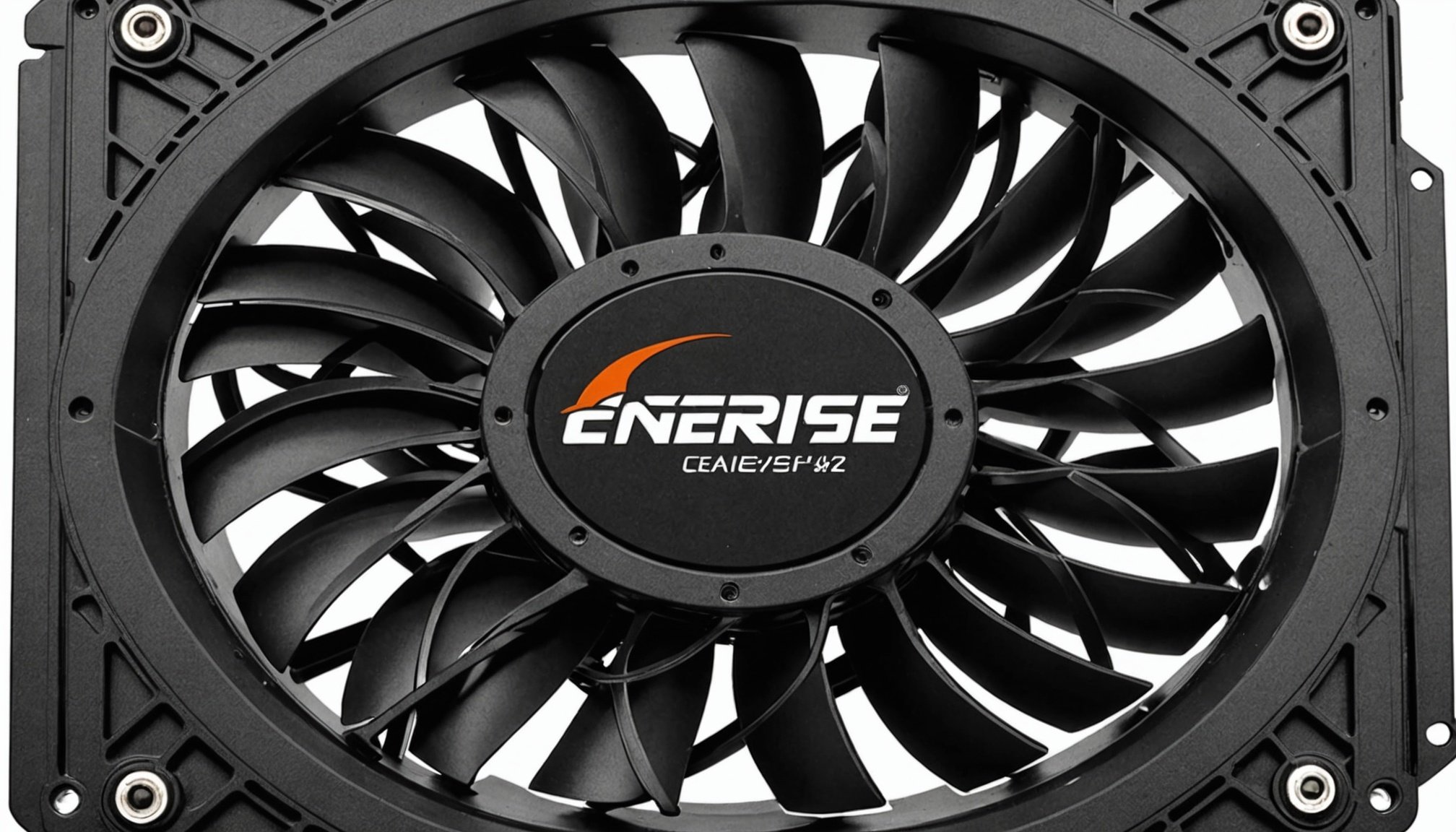Selecting the Best Case Fans for Maximum Cooling Efficiency and Minimal Noise: A Comprehensive Guide
When it comes to building or upgrading your PC, one of the most crucial components to consider is the case fans. These fans are responsible for maintaining the optimal temperature inside your case, ensuring your hardware runs smoothly and efficiently. In this guide, we will delve into the key factors to consider when selecting the best case fans for maximum cooling efficiency and minimal noise.
Understanding the Key Performance Metrics
Before diving into the specifics of case fans, it’s essential to understand the key performance metrics that define their efficiency and noise levels.
In the same genre : Maximize Your Machine Learning Potential: A Comprehensive Guide to Installing and Fine-Tuning a High-Performance GPU in Your Dell Precision 5820 Tower
Airflow and CFM
Airflow, measured in Cubic Feet per Minute (CFM), is a critical metric that indicates how much air a fan can move. Higher CFM values generally mean better cooling performance. For example, the Arctic F12, known for its high airflow, can move a significant amount of air, making it an excellent choice for cooling[1].
RPM and Noise Level
The speed of a fan, measured in Revolutions Per Minute (RPM), directly affects both its cooling performance and noise level. Fans with higher RPMs tend to be noisier but often provide better cooling. However, advancements in fan design have led to the development of fans that can operate at high RPMs while maintaining low noise levels. The Noctua NF-A4x10 FLX, for instance, uses advanced acoustic optimization and vibration pads to minimize noise even at high speeds[1].
Topic to read : Comprehensive Guide to Crafting a High-Performance 3D Rendering Workstation Featuring the AMD Threadripper 3960X
Static Pressure
Static pressure is another vital metric, especially for fans used in radiators or tight spaces. It measures the fan’s ability to push air through obstacles. Fans with high static pressure are better suited for these applications. The Corsair NAUTILUS 360 RS ARGB fans, equipped with the AirGuide technology, excel in this area by concentrating airflow and improving thermal dissipation[3].
Choosing the Right Fan Size and Type
Fan Size
The size of the fan is a crucial factor in determining its performance. The most common sizes are 120mm, 140mm, and 180mm. Each size has its own advantages and is suited for different applications.
- 120mm Fans: These are the most common and versatile fans. They are often used in case fans, CPU coolers, and radiators. The Corsair LL120 RGB is a popular example, offering dynamic speed control and RGB lighting[1].
- 140mm Fans: These fans are known for their balance between airflow and noise. They are often used in cases where a bit more airflow is needed without increasing the noise level significantly. The Fractal Design Torrent Compact uses 180 x 38 mm fans for maximum airflow and controlled noise levels[2].
- 180mm Fans: These larger fans are less common but offer superior airflow. They are typically used in high-performance cases or custom setups.
Fan Blades and Design
The design of the fan blades significantly impacts the fan’s performance. Advanced designs like the Noctua’s Stepped Inlet Design and Inner Surface Microstructures enhance airflow and reduce noise[1].
Controlling Noise Levels
Noise is a significant concern for many PC enthusiasts. Here are some strategies to minimize noise while maintaining high performance:
PWM Control
Pulse Width Modulation (PWM) allows for dynamic speed control of the fans, enabling them to run at lower speeds when the system is under light load, thus reducing noise. The Corsair iCUE software, for example, allows for precise control over PWM fans, ensuring they run quietly when possible[2].
Anti-Vibration Pads
Many high-performance fans come with anti-vibration pads or silent blocks that reduce the transmission of vibrations to the case, thereby minimizing noise. The Noctua NF-A4x10 FLX uses silicone-based anti-vibration pads to achieve this[1].
Low Noise Fans
Some fans are specifically designed to be quiet. The Noctua Redux series and the Be Quiet fans are renowned for their low noise levels without compromising on performance.
RGB and Aesthetic Considerations
While performance is paramount, aesthetics can also play a significant role in choosing case fans.
RGB Lighting
RGB fans add a visual appeal to your build and can be synchronized with other components using software like Corsair iCUE. The Corsair LL120 RGB, with its 16 independent RGB LEDs, offers a wide range of lighting effects and can be controlled dynamically[1].
Design and Build Quality
The design and build quality of the fans can also impact their performance and longevity. Fans with robust builds and innovative designs like the Arctic F12, which features a bidirectional installation capability, can enhance both performance and aesthetics[1].
Practical Tips for Installation and Management
Here are some practical tips to help you get the most out of your case fans:
Proper Placement
- Intake and Exhaust: Ensure you have a balanced intake and exhaust setup to maintain optimal airflow. For example, the Fractal Design Torrent Compact features an open front grille and strategically placed fans for maximum airflow[2].
- CPU and GPU Cooling: Direct fans to cool critical components like the CPU and GPU. The Lian Li LANCOOL 205 has a dedicated fan for the graphics card and perforated panels for optimal ventilation[2].
Cable Management
- Use cable management systems to keep your setup clean and organized. The Corsair 7000X RGB, for instance, includes an intuitive cable management system with large channels, hooks, and straps[2].
Software Control
- Utilize software like Corsair iCUE or ASUS Aura Sync to control fan speeds and RGB lighting. This allows for a customized and synchronized setup that balances performance and aesthetics[2][3].
Comparative Analysis of Top Case Fans
Here is a comparative table of some top case fans, highlighting their key features:
| Fan Model | Size | RPM Range | CFM | Static Pressure | Noise Level | RGB Lighting |
|---|---|---|---|---|---|---|
| Arctic F12 | 120mm | 1,350 tr/min | 53 CFM | 1.29 mm H₂O | 0.3 Sone | No |
| Noctua NF-A4x10 FLX | 40mm | 1,500 – 3,000 tr/min | 14.9 CFM | 1.83 mm H₂O | 17.1 dBA | No |
| Corsair LL120 RGB | 120mm | 600 – 1,500 tr/min | 43.25 CFM | 1.61 mm H₂O | 24.8 dBA | Yes |
| Corsair NAUTILUS 360 RS ARGB Fans | 120mm | 420 – 2,100 tr/min | 72.8 CFM | 4.15 mm H₂O | 10 – 36 dBA | Yes |
Selecting the best case fans is a multifaceted decision that involves considering airflow, noise levels, static pressure, and aesthetics. By understanding the key performance metrics and practical installation tips, you can create a cooling setup that is both efficient and quiet.
As Lawrence Lee from SilentPCReview notes, “The best fan is one that balances airflow, noise, and power consumption. It’s not just about moving air; it’s about doing it efficiently and quietly.”
Whether you’re building a high-performance gaming PC or a quiet home server, choosing the right case fans can make a significant difference in the overall performance and longevity of your system. So, take your time, do your research, and invest in fans that meet your specific needs.
In the words of a PC enthusiast, “A good set of case fans is like the unsung hero of your build. They keep everything running smoothly and quietly, allowing you to focus on what really matters – enjoying your PC experience.”


